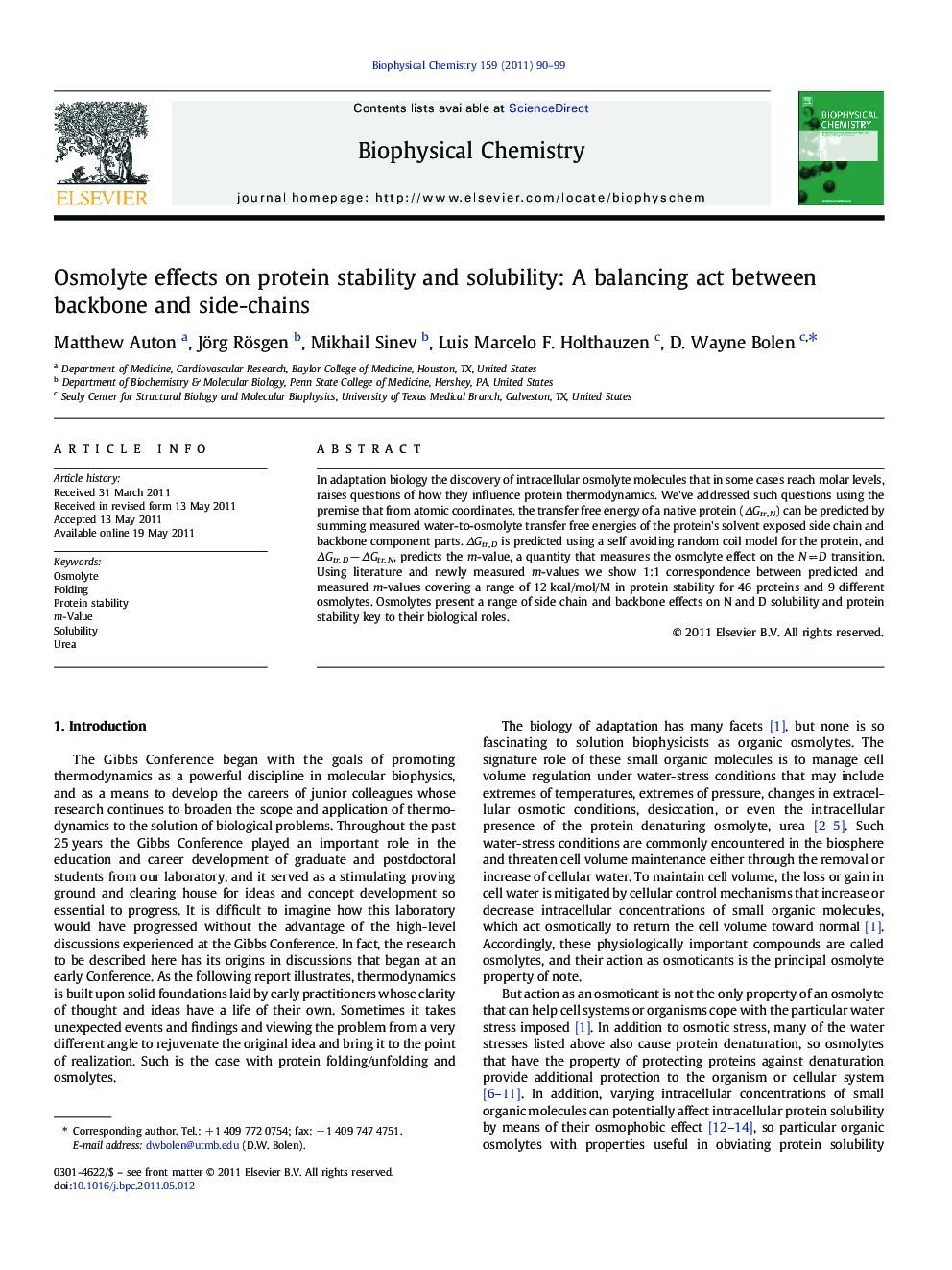| Article ID | Journal | Published Year | Pages | File Type |
|---|---|---|---|---|
| 5371398 | Biophysical Chemistry | 2011 | 10 Pages |
In adaptation biology the discovery of intracellular osmolyte molecules that in some cases reach molar levels, raises questions of how they influence protein thermodynamics. We've addressed such questions using the premise that from atomic coordinates, the transfer free energy of a native protein (ÎGtr, N) can be predicted by summing measured water-to-osmolyte transfer free energies of the protein's solvent exposed side chain and backbone component parts. ÎGtr, D is predicted using a self avoiding random coil model for the protein, and ÎGtr, D â ÎGtr, N, predicts the m-value, a quantity that measures the osmolyte effect on the N â D transition. Using literature and newly measured m-values we show 1:1 correspondence between predicted and measured m-values covering a range of 12 kcal/mol/M in protein stability for 46 proteins and 9 different osmolytes. Osmolytes present a range of side chain and backbone effects on N and D solubility and protein stability key to their biological roles.
Graphical abstractDownload full-size imageResearch highlight⺠We compare predicted with experimental m-values for various osmolytes. ⺠Use of the Transfer Model to predict protein m-values works very well. ⺠Peptide backbone is the dominant factor only for strongly (de)stabilizing osmolytes. ⺠Side-chain osmolyte interactions aid in protein solubility for other osmolytes.
